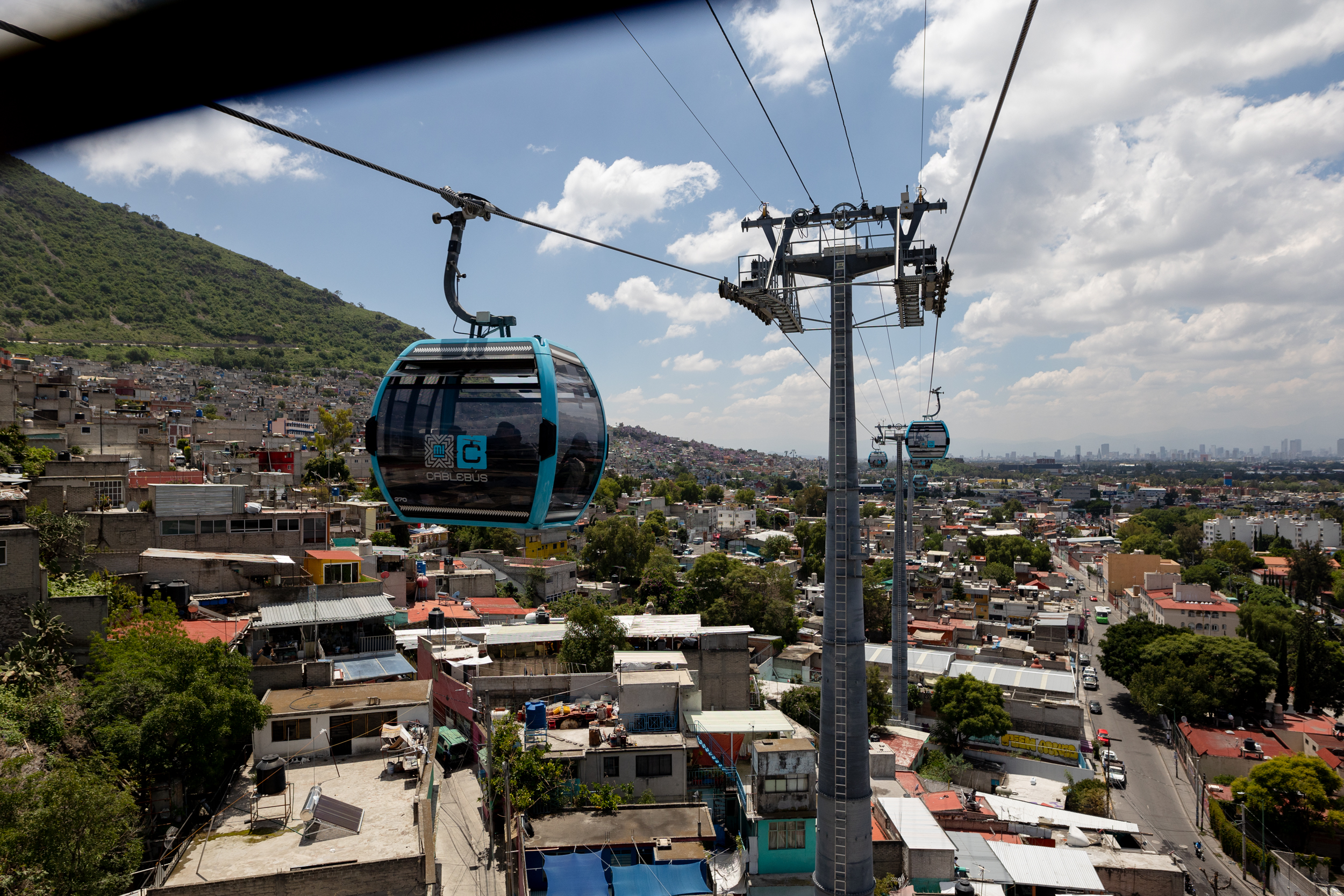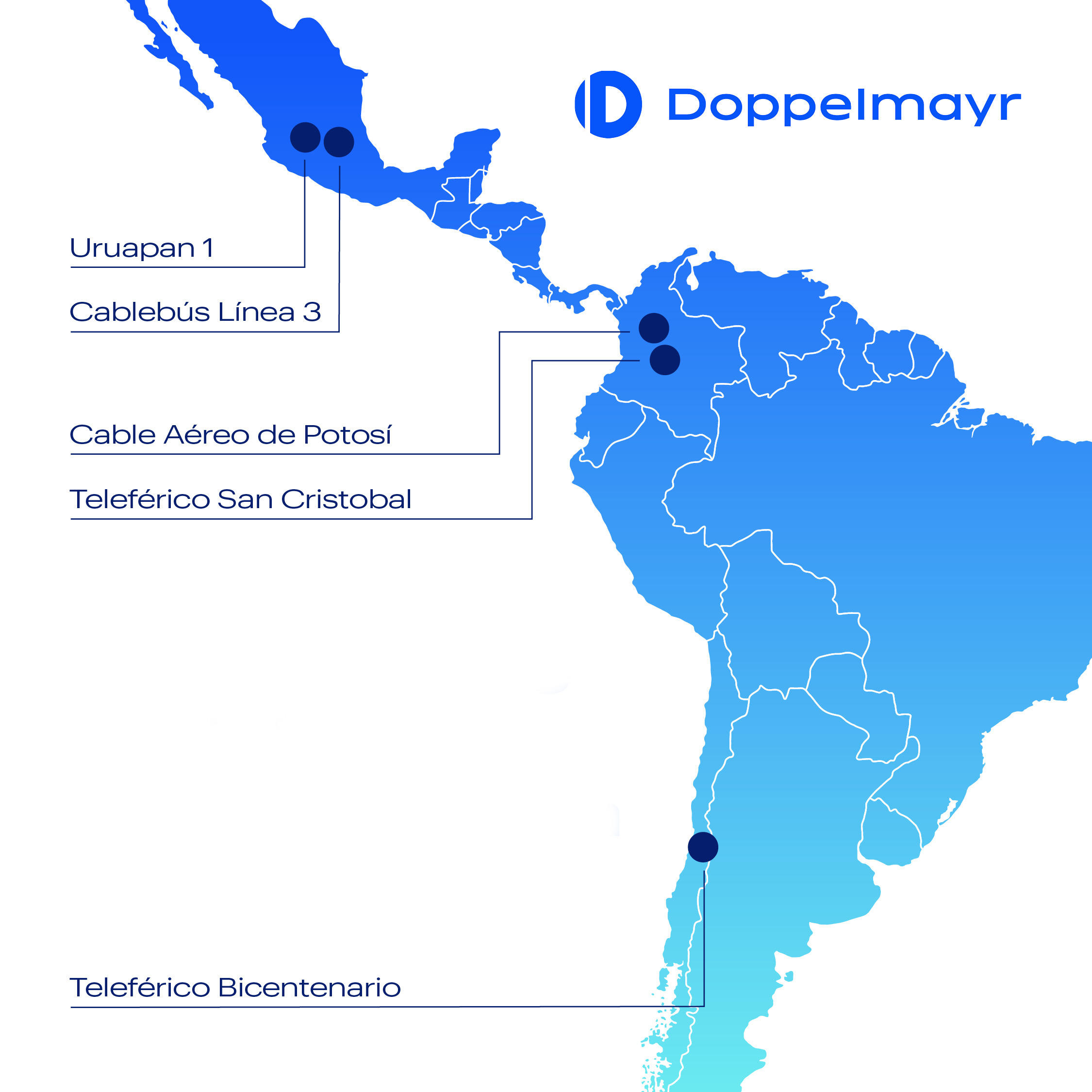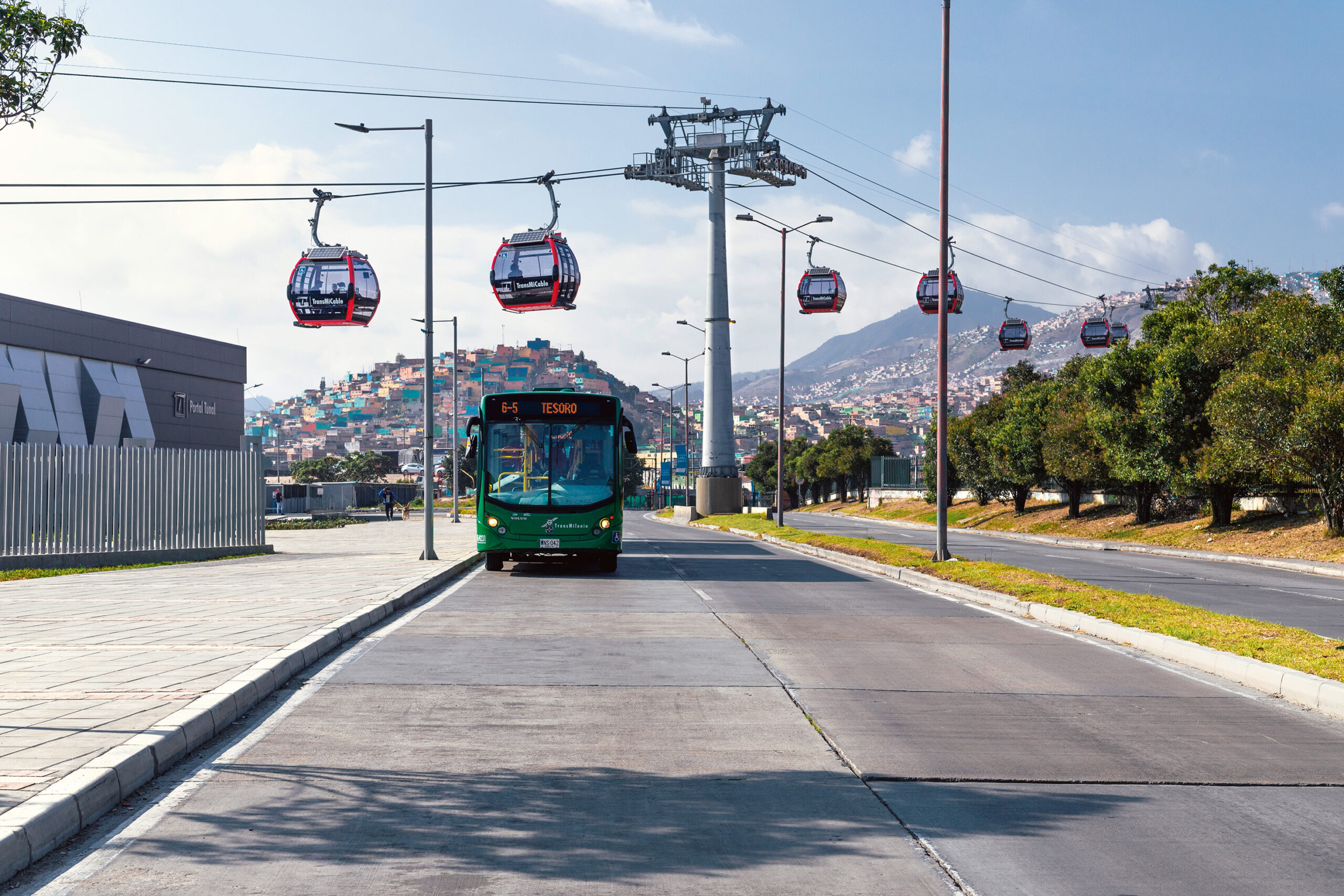
Cities, SI Urban 1/2024
Latin America: Succes for urban cable cars
Latin America leads the way when it comes to urban cable cars. The success of already realized installations is significant and inspires further future projects. In Colombia‘s capital Bogotá, DOPPELMAYR cable cars two and three are currently under construction.
The 3.3-kilometer-long 10-passenger gondola Cable Aéreo de Potosí is set to begin operation in 2027. Around 600,000 residents will benefit from the comfortable, uncomplicated, and environmentally friendly connection, which will transport passengers from the Potosí district in the southwest of Bogotá to the TransMilenio public bus system stop in just ten minutes.
“The new cable car will save our citizens 30 minutes of travel time on their daily journeys,“ reports Claudia López Hernández, former mayor of Bogotá, adding: “In addition, we will complement the four stations with new social facilities, including schools, kindergartens, care facilities, as well as centers for health, culture, and sports. This project contributes to a higher quality of life for the people in our city.“
Teleférico San Cristobal: Connection to transport hub
San Cristóbal, the southeastern 4th district of Bogotá, will also be connected via a DOPPELMAYR cable car. The cable car securely, quickly, and reliably connects to the transport hub Portal 20 de Julio and thus to the TransMilenio bus system.

The new urban cable car projects
by DOPPELMAYR in Latin America.
Starting in 2026, the 10-passenger gondola will enhance the quality of life for the approximately 400,000 residents of the district. The authorities expect similar success and an extremely positive impact on society from both cable car projects in Bogotá as the TransMiCable cable car inaugurated in Ciudad Bolívar in 2018.
Residents of this previously poorly connected neighborhood have since greatly benefited from the reliable, fast, and convenient connection: Up to 20,000 residents use the cable car as a means of transportation daily.
Cablebús Línea 3: Positive social and economic change
Mexico is also preparing for future mobility demands in its cities with urban cable car projects. Currently under construction is the third cable car line in Mexico City, Cablebús Línea 3.
It connects the neighborhoods of Los Pinos and Vasco de Quiroga over a distance of 5.5 kilometers. It features six stations and is designed to accommodate 12 million passengers per year.
Drawing from experience, Konstantinos Panagiotou, CEO of DOPPELMAYR Mexico, reports that the cable car‘s efficiency makes jobs, schools, and training centers more accessible.
Thus, Cablebús Línea 3 is another important component for urban network integration, neighborhood upgrading, and the transformation of the public transportation system towards greater sustainability.
The TransMiCable Ciudad Bolivar cable car
in Bogotá, Colombia, has been optimally integrated into the city‘s public transport network since 2018.

Uruapan 1: Mexico City as a role model
The government of the Mexican state of Michoacán is investing three billion pesos (around 155 million euros) in the construction of an urban cable car, including buildings and accompanying structures, in the city of Uruapan.
The cable car connection will be 8.4 kilometers long and is expected to transport up to 1,500 people per hour in each direction.
“Projects like this have a positive societal effect, as they not only provide a fast, safe, and barrier-free transportation option for the population but also serve as an economic engine in the area of the cable car stations,“ says Konstantinos Panagiotou, emphasizing, “With the development of this cable car, we are taking a big step in the transformation of public transportation towards greater sustainability in Uruapan.“
Teleférico Bicentenario: Kickoff for urban cable car mobility
Another kickoff for the construction of an urban cable car will take place in Santiago de Chile. The approximately 3.4-kilometer-long cable car route will connect three communities from Huechuraba on the northern edge of the city to Providencia in the northern downtown area and is expected to begin operation in 2026.







